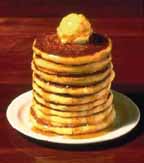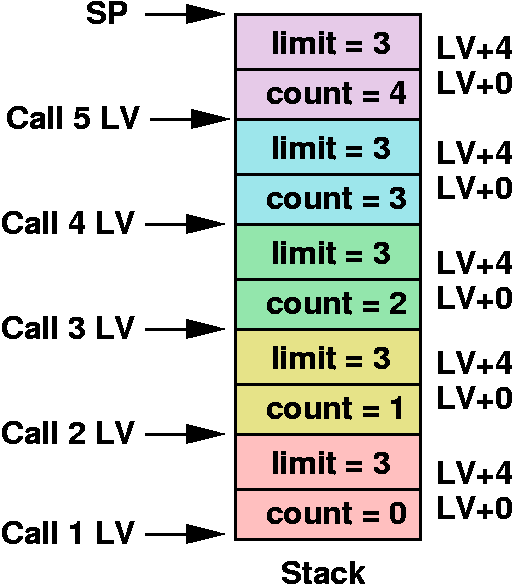When we are showing a bunch of memory locations as a vertical
array of cells, higher address memory locations are on the
bottom. However, when showing stacks as an array of cells, the higher
memory addresses are toward the top.
Op-code
(Hex) |
Assembly
Language
Mnemonic |
Operands |
Description |
| 0x10 |
BIPUSH |
byte |
Push a byte onto stack |
| 0x59 |
DUP |
N/A |
Copy top word on stack and push onto stack |
| 0xA7 |
GOTO |
label name |
Unconditional jump |
| 0x60 |
IADD |
N/A |
Pop two words from stack; push their sum |
| 0x7E |
IAND |
N/A |
Pop two words from stack; push Boolean AND |
| 0x99 |
IFEQ |
label name |
Pop word from stack and branch if it is zero |
| 0x9B |
IFLT |
label name |
Pop word from stack and branch if it is less than zero |
| 0x9F |
IF_ICMPEQ |
label name |
Pop two words from stack and branch if they are equal |
| 0x84 |
IINC |
variable name, byte |
Add a constant value to a local variable |
| 0x15 |
ILOAD |
variable name |
Push local variable onto stack |
| 0xB6 |
INVOKEVIRTUAL |
method name |
Invoke a method |
| 0x80 |
IOR |
N/A |
Pop two words from stack; push Boolean OR |
| 0xAC |
IRETURN |
N/A |
Return from method with integer value |
| 0x36 |
ISTORE |
variable name |
Pop word from stack and store in local variable |
| 0x64 |
ISUB |
N/A |
Pop two words from stack; push their difference |
| 0x13 |
LDC_W |
constant name |
Push constant from constant pool onto stack |
| 0x00 |
NOP |
N/A |
Do nothing |
| 0x57 |
POP |
N/A |
Delete word from top of stack |
| 0x5F |
SWAP |
N/A |
Swap the two top words on the stack |
| 0xC4 |
WIDE |
N/A |
Prefix instruction; next instruction has a 16-bit index |
| N/A |
ERR |
N/A |
Print an error message and halt the simulator |
| N/A |
HALT |
N/A |
Halt the simulator |
| N/A |
IN |
N/A |
Reads a character from the keyboard buffer and pushes it onto the stack. If no character is available, 0 is pushed |
| N/A |
OUT |
N/A |
Pop word off stack and print it to standard out |



